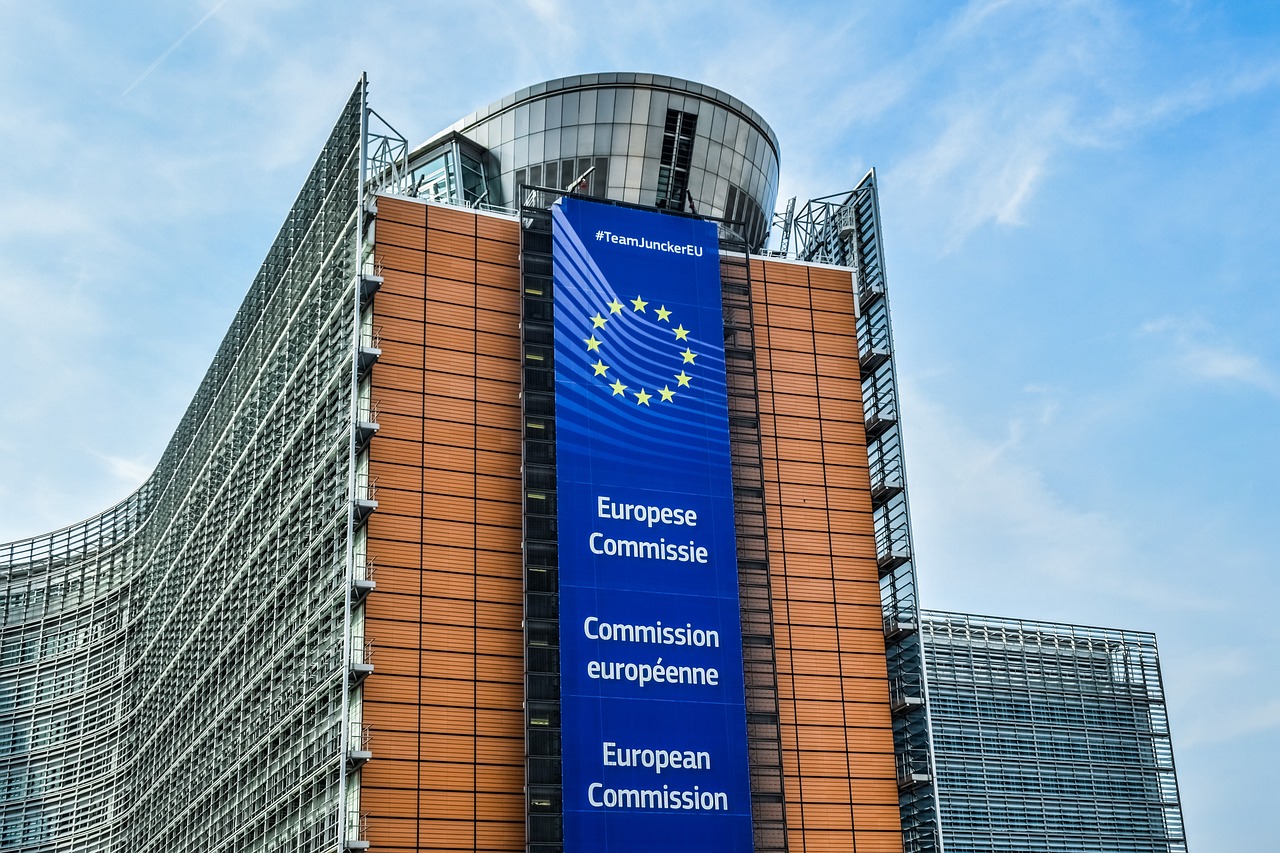Impact Investing
Sustainable Finance: What Are the Latest News on European Policies
The new EU Commission focuses on sustainable finance, streamlining regulatory frameworks, and fighting greenwashing, with ESMA, SBTi, and ESA contributing guidelines on ESG labeling, net-zero standards, and PAI disclosures. The CSRD directive emphasizes materiality and taxonomy in reporting, while ESAP’s July 2026 rollout will centralize capital market data access, enhancing transparency and efficiency.

On the occasion of the SRI weeks, the usual monthly update meeting on ESG policies of the Sustainable Finance Forum lasted sixty minutes – and not thirty – and was also open to non-members.
Many topics were at the center of attention, including: the new European Commission, the prospects for sustainable finance in the EU, the next moves of ESMA, the priorities to keep in mind for reporting according to the CSRD directive, the SBTi standards for financial institutions, the ESA report on PAI and the implementation of the ESAP, the single access point that provides centralized electronic access to relevant information for capital markets and financial services.
The new European Commission and the prospects for sustainable finance in the EU
The new EU Commission was elected a month ago and sees Maria Luis Albuquerque at the helm of the Financial Services and Savings and Investment Union (DG Financial Services and Savings and Investment Union). The Forum has two main mandates: to reduce reporting burdens for companies by 25%, rising to 35% for SMEs, and to support sustainable finance and develop a categorization of sustainable financial products and services.
The Commission’s work is expected to begin in December, after the hearings of the designated Commissioners and the Parliament’s vote on the College of Commissioners, which will be held in the coming days.
In particular, Commissioner Albuquerque will appear on November 6th at the hearing in the ECON Committee of the Parliament with clear plans on sustainable finance that intend to consolidate the regulatory framework, simplifying the existing rules and supporting their implementation over a five-year horizon. In particular, the Portuguese former Minister of Finance intends to pay cross-cutting attention to gender and generational issues, in a just transition path, and support the transition from Capital Markets Union to Savings and Investments Union.
On the SFDR front, she aims to evaluate the feasibility of a simple and rigorous categorization system and the coherence with the EU regulatory framework on disclosure, while on the EU Taxonomy front, to include more economic activities, simplify the DNSH (Do No Significant Harm) criteria, and make the path of transition activities credible.
There is also space for further guidelines for ESRS, Taxonomy and EUGBS while improving interoperability between EU and international standards, in particular on transition and sustainability reporting. And finally, continue to fight against greenwashing, promote financial education and protect end investors.
ESMA’s next moves on sustainable finance
ESMA’s timeline is fitting: starting from the entry into force of the guidelines on ESG fund labeling on November 21st up to the preparation of reporting standards for SMEs that will also be subject to the CSRD from 2029.
Priorities to keep in mind for reporting according to the CSRD directive
There are three priority macro areas to keep in mind when drafting the 2024 CSRD-compliant sustainability reports: materiality, structure and taxonomy. As regards materiality, it is necessary to provide detailed information on the materiality analysis process following the EFRAG guidelines on the implementation of the ESRS and to guarantee and demonstrate engagement with impacted stakeholders.
In terms of structure, it is good to keep in mind that the perimeter is the same as the financial statement, that quantitative information is needed to support the materiality analysis and that a summary overview must be provided via a table of contents. Finally, on the taxonomy front, it is necessary to show coherence between the report and the transition plans and provide information on the materiality analysis relating to the entire value chain.
Furthermore, pay attention to compliance with International Financial Reporting Standards (IFRS) and drafting according to the European Single Electronic Format (ESEF), suggests FFS.
SBTi launches first net zero standard for sustainable finance
SBTi (Science Based Target initiative), a non-profit organization created to support companies and financial institutions around the world in the fight against the climate crisis and provide them with a clearly defined path to reduce emissions in line with the goals of the Paris Agreement, recently published the first voluntary standard for net-zero targets based on the financial sector.
The new standard for sustainable finance applies to institutions that generate 5% or more of their revenues from lending, investing (as owner or manager of assets), insurance underwriting and/or capital markets activities and establishes both short-term and long-term requirements to address Scope 3 emissions by aligning financial flows with global climate goals. It also establishes a ban on new fossil fuel financing for financial institutions with targets validated by the platform.
Financial institutions will need to achieve five key outcomes : demonstrate entity-level climate leadership by committing to the net-zero transition and integrating climate considerations into governance; increase the scope, quality and transparency of their emissions inventory over time; set climate alignment targets and benchmark targets based on a predefined list of emissions-intensive sectors; and ensure that progress against climate targets is tracked and accessible through disclosure.
ESA report on PAI
Last week, the European Supervisory Authorities (ESAs, i.e. ESMA, EBA, EIOPA) published their third annual report with the analysis of PAI declarations as of 30 June 2023.
Among the main findings, the ESAs reported a significant improvement in the quality of responses provided by the competent national authorities and an improvement in the accessibility and quality of information on PAIs, especially at product level.
EU authorities also provided examples of good and bad practices in PAI declarations. Among the former, the Forum highlighted the stipulation of a commitment to decarbonize investments, the description of the share of portfolio aligned with the Paris Agreement and the disclosure of engagement actions and escalation policies, among the latter generic references to alignment with the objectives of the Paris Agreement.
What is the current status of the ESAP implementation?
Finally, space during the update of the Forum to the ESAP which will operate through a two-level system in which the information that will be collected starting from July 2026, will first be transmitted by the entities to the “collection bodies” (OAM) and then will be made available by the collection bodies to the ESAP.
The Technical Implementation Standards (ITS) establish the tasks of the OAMs by specifying detailed requirements for these bodies, such as the timeframes and formats to be used, validation controls, and the type of metadata. The standards also specify requirements for making information easily accessible to users, including how reporting entities should be categorized and the types of information to be made available.
__
(Featured image by dimitrisvetsikas1969 via Pixabay)
DISCLAIMER: This article was written by a third party contributor and does not reflect the opinion of Born2Invest, its management, staff or its associates. Please review our disclaimer for more information.
This article may include forward-looking statements. These forward-looking statements generally are identified by the words “believe,” “project,” “estimate,” “become,” “plan,” “will,” and similar expressions. These forward-looking statements involve known and unknown risks as well as uncertainties, including those discussed in the following cautionary statements and elsewhere in this article and on this site. Although the Company may believe that its expectations are based on reasonable assumptions, the actual results that the Company may achieve may differ materially from any forward-looking statements, which reflect the opinions of the management of the Company only as of the date hereof. Additionally, please make sure to read these important disclosures.
First published in ESG NEWS. A third-party contributor translated and adapted the article from the original. In case of discrepancy, the original will prevail.
Although we made reasonable efforts to provide accurate translations, some parts may be incorrect. Born2Invest assumes no responsibility for errors, omissions or ambiguities in the translations provided on this website. Any person or entity relying on translated content does so at their own risk. Born2Invest is not responsible for losses caused by such reliance on the accuracy or reliability of translated information. If you wish to report an error or inaccuracy in the translation, we encourage you to contact us

-

 Fintech1 week ago
Fintech1 week agoPayPal Under Fire: Excessive Data Collection and Privacy Concerns in Advertising
-

 Africa4 days ago
Africa4 days agoMorocco’s Rising Country Risk Profile Boosts Investor Confidence
-

 Cannabis2 weeks ago
Cannabis2 weeks agoTrump Signals Historic Shift: U.S. Weighs Reclassifying Cannabis from Schedule I to III
-

 Crypto1 week ago
Crypto1 week agoHyperliquid Proposes Burning $1B in HYPE to Make Supply Deflationary

























